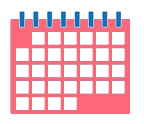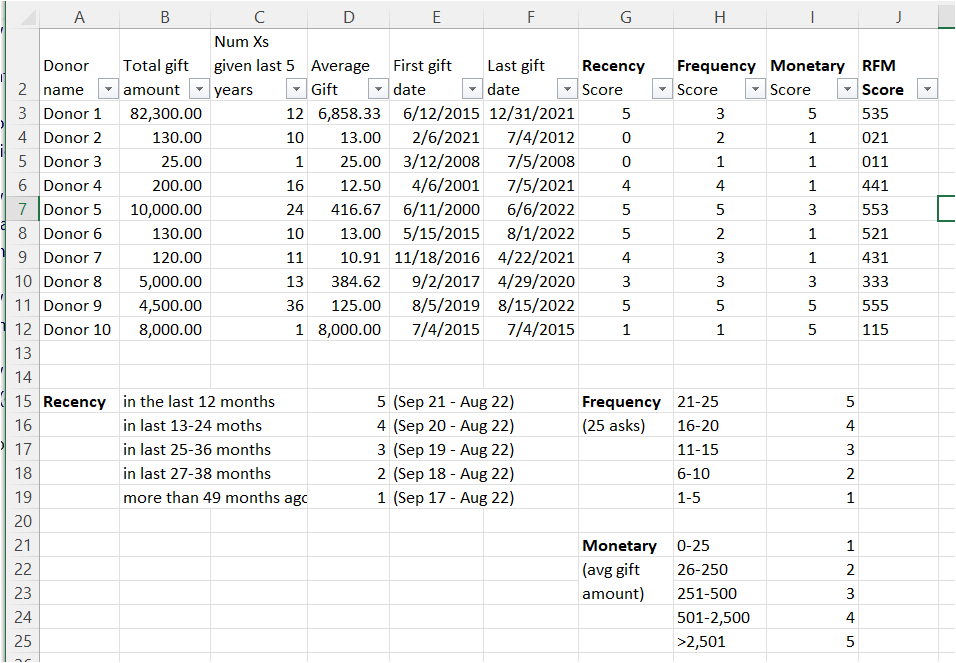How To Segment Your Audience
Published: December 12, 2022

 by Janet Bargewell and Shannon Falter, GiveDirect Support
by Janet Bargewell and Shannon Falter, GiveDirect Support
What is Donor Segmentation?
Picture this: There is a large group of people in a room. Around the room there are pictures of different animals posted (dog, cat, bird, fish). You ask the people in the room to stand under the picture of their favorite pet. Next you ask each group to organize themselves by birth month. You have just segmented your audience.
This is a simple example, but it demonstrates the basic concept of donor segmentation. Donor segmentation is the practice of "sorting" your donors into groups based on similarities. Once you have sorted a large group into segments, you can customize your messaging for each sub-group, tailoring your content to resonate with that group. Put differently, segmentation enables you to meet your audience where they are.
Why Should I Segment?
In this age of technology, people expect a more personalized experience. According to MailChimp, their clients that sent segmented emails had a 14.31% higher open rate, 100.95% higher click rate, and more than a 4% lower bounce rate.
You may be thinking you don't have the time to properly segment your audience. However, unless you already have all the funding and resources you need, you probably don't have the time to not segment your audience.
-
Segmenting helps you measure and evaluate how specific groups respond to your appeals: which donors are more likely to respond to a request for a monthly gift; which donors are no longer giving; and which prospects are more likely to make a gift to a particular issue.
-
Segmenting helps you keep your audience engaged. As mentioned above, sending out a segmented email campaign can increase the engagement of your audience. You can better match your campaigns and "asks" to your segmented groups and potentially maintain a better retention rate of existing supporters. For example, a donor who only contributes an annual gift should receive a different message than one who makes a monthly recurring contribution.
-
Segmenting helps your donor to feel appreciated. Donors want to feel you care about them and that you took time to understand their needs and preferences. Don't overlook the importance of tailoring your communications. A "one-size-fits-all" approach to communications can lead to disengagement. In fact, by not segmenting your audience, some people will perceive your messages as spam which could result in the loss of supporters.
Even with all the reasons to segment, a bit of common sense is also required. Don't segment your audience into a specific category just because a blog or website says so. Segmenting your audience by age or gender may not make sense for your organization. Plan your segments according to what best fits your organization.
Ways to Segment
Let's look at some common nonprofit segmentation categories that may be useful to you.
Segment By Giving Habits:



RFM Modeling
This is a technique that you may find useful and can consolidate all of these giving habits into a single spreadsheet.
(Note: the basic model does not include donor type, but this or any other category could easily be added to the model with an additional digit.)
- Recency refers to the time when a donor made the last donation.
- Frequency is the number of times a person has donated.
- Monetary Value is the amount in dollars that a person has donated.
Here's how it works
- For recency, rank your donors by the date of their last gift, from the most recent to the past 5 years. Those who gave most recently, (this fiscal year) get a recency score of 5. Those who gave last fiscal year will be ranked 4 and so on.
- Next rank donors by how often they give on the frequency scale. Ranking them from 5 for the most frequent times they have given to 1 for the least frequent times they gave in the last 5 years.
- Finally repeat the process using the highest donation amount (monetary value) each donor gave in the last 5 years, breaking them up into 5 categories.
The monetary categories can be whatever is useful for your nonprofit. For example, if your highest donation amount in the past five years is only $500, including a $1,000 to $10,000 range will not be useful.
Here's what a hypothetical RFM table might look like.
(Notice the RFM parameters below the table)

You can now use this information in multiple ways. One way would be to target donors with a score higher than 450. This would include donors who gave in the last 24 months and who responded to your solicitations the most often. (Donors 1,5,6 & 9 in the table).
A second communication might be sent to donors who contributed the most recently without regard to frequency or monetary value (donors with a score between 400 and 555). This would only include donors 4 & 7 because you already sent a different communication to the other four. Take care that you don't double up on your emails or solicitations.
Segment By Giver Profile:
This category might include relationship length, volunteer activity, interests, and how your donors were acquired.

Did they become a supporter because of a family or friend referral? Do they donate through the CFC or other workplace giving campaign? Or perhaps they began following your feed on social media?
Don't forget that not all supporters contribute monetarily so you should also evaluate your volunteers by the number of hours they contribute, the kinds of volunteering they enjoy (making phone calls or working your events) and the length of time the person has served as a volunteer.
Segment By Demographics:

Segment By Communication Style:


Set and Measure Your Segmentation Efforts
Now that you have your audience sorted into subgroups, it's time to see if your efforts will pay off by setting measurable goals.
For example, let's say you send an email to a segment of donors who contribute more than twice a year, but are not sustaining donors (monthly). Your goal through this targted campaign may be to turn 10% of that group into sustaining donors. Perhaps your goal is to entice your volunteer base to increase their involvement by 25%; to increase your social media followers by 50%.
If you don't already have these statistics, you may also want to experiment with how each segment interacts with channeled marketing: text messaging, different social media platforms, or email campaigns.
Conclusion and Takeaways
You may find segmenting your audience is a tedious task. But you need to invest time to get it right. Keep in mind this is not an exact science. If you find your first efforts are not as effective as you had hoped, be willing to re-evaluate your methods and criteria. Look over your audience data again and see if you can create new or altered subgroups. Remember:
- Segmenting your audience has a positive impact on donor engagement and retention rate of existing supporters.
- The RFM Model can be used to identify sub-groups.
- Don't forget about segments that contribute in ways other than financially.
- Only segment when it makes sense, or when you create a group that is large enough to target.
- Your donor base will appreciate the time you take to understand their needs and preferences.